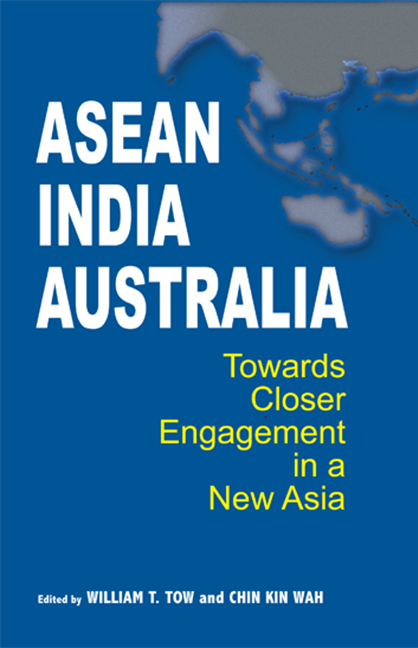Book contents
- Frontmatter
- Contents
- Preface
- Contributors
- List of Abbreviations
- Introduction
- Part I Emerging Regional Security
- Part II Energy Security
- Part III Climate Change
- Part IV Maritime Security
- Part V Law Enforcement/Combating International Crime
- 17 Implications of the Growing Prevalence of Interregional Crime for Cooperation in the Asia-Pacific Region
- 18 Australian Perspectives on Regional Law Enforcement: Issues and Challenges
- 19 Countering International Crime in an ASEAN Context: Singapore's Perspective
- 20 Indian Perspectives on Law Enforcement against International Crime
- Conclusion
- Bibliography
- Index
20 - Indian Perspectives on Law Enforcement against International Crime
from Part V - Law Enforcement/Combating International Crime
Published online by Cambridge University Press: 21 October 2015
- Frontmatter
- Contents
- Preface
- Contributors
- List of Abbreviations
- Introduction
- Part I Emerging Regional Security
- Part II Energy Security
- Part III Climate Change
- Part IV Maritime Security
- Part V Law Enforcement/Combating International Crime
- 17 Implications of the Growing Prevalence of Interregional Crime for Cooperation in the Asia-Pacific Region
- 18 Australian Perspectives on Regional Law Enforcement: Issues and Challenges
- 19 Countering International Crime in an ASEAN Context: Singapore's Perspective
- 20 Indian Perspectives on Law Enforcement against International Crime
- Conclusion
- Bibliography
- Index
Summary
Characteristics of Emerging Threats
New threats confront the international law enforcement community as the end of the first decade of the new century draws to a close. In recent years, terrorism, organized crime, and the proliferation of both weapons of mass destruction and advanced conventional weapons systems have emerged to become important threats to global security. The vulnerability of international society to such threats has become more obvious in recent years precisely due to their international scope and impact. This vulnerability constitutes a major dimension of the contemporary security environment and one which international crime syndicates recognize and exploit. Organized crime networks are crossing frontiers, diversifying their illegal activities, and creating new opportunities for illicit profiteering and corruption.
A second major characteristic rendered by the emerging international threat environment is that the challenges now posited by international crime have become more asymmetric. Nebulous groups and cells spread over various parts of the country and world — often obscurely linked to one another — are often able to exploit their potential for committing acts of terror which arise in their respective areas of operation. Again, the scope of this threat is sufficiently great that many countries could be affected by just one international criminal entity.
A third characteristic of the emerging international threat mileau is that contemporary threats project diverse and lethal strategic challenges. Weapons of mass destruction (nuclear, chemical, biological, and radiational weapons) and weapons of “mass disruption” (that is, tools of cyberterrorism) have precipitated the emergence of these strategic threats. The rediscovery of suicide attacks as a means of terrorism has added another aspect to the ruthlessness that characterizes the contemporary threats that we face today.
This chapter assesses how key selected states (India, in particular, Japan, and China) and ASEAN, as Southeast Asia's most important and cohesive institution, have adjusted and responded to the above threats and to those terrorist and criminal groups that would exploit them for their own purposes. The chapter's overall theme is that while there is an increased recognition of, and sensitivity to, the effects of terrorism and international crime by these actors, their track record for dealing with such challenges remains mixed to date. Greater and more effective international cooperation among these actors in combating these threats is a realistic prospect, however, if some fundamental perceptional and procedural differences can be overcome.
- Type
- Chapter
- Information
- ASEAN-India-AustraliaTowards Closer Engagement in a New Asia, pp. 347 - 360Publisher: ISEAS–Yusof Ishak InstitutePrint publication year: 2009



